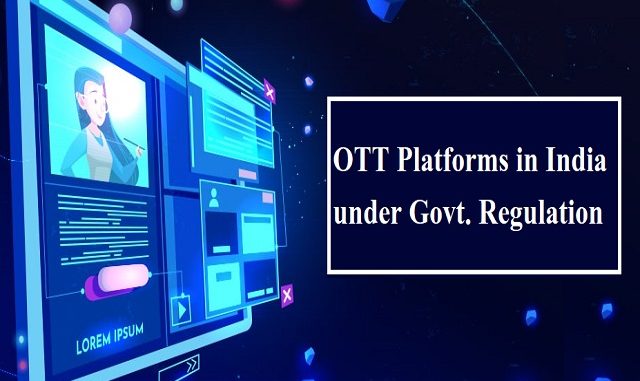
In News
Now government to govern all the digital platforms and over the top (OTT) platforms.
In-Detail
- The government, in a notification, has ordered all the digital platforms including entertainment, films, and news platforms to come under the ambit of the Union Ministry of Information and Broadcasting.
- The order was signed by the President on November 9, 2020.
- The order covers the digital and online media including films, audio and visual programs made available by online content providers, and news and current affairs content on online platforms.
- Under the legal framework of the Information Technology Act, 2000, comes the online content providers like Amazon, Hotstar, Netflix and news platforms.
Need for Government Control
- A proper framework is needed, as there is a significant shift of viewership from traditional media platforms to digital media.
- At present, there are 560 million internet users on OTT platforms.
- With the prevalence of mobile phones and the possible threat to the young generation by the content on the OTT platforms can create, there is a need for regulating the content.
- Since 2019, more cases were filed in the Supreme Court and various high courts over unregulated content on the OTT platforms.
- According to a survey, India had 17 crore OTT platform users by the end of 2019.
- The revenue generated by the OTT industry in 2019 was close to Rs 500 crore and is expected to become a Rs 4000 crore market by 2025.
- Depending on the platform at present, there are autonomous, government, and self-regulatory bodies for entertainment and news providers.
- There is a Press Council for print media, which is a statutory quasi-judicial authority.
- For television news, there is the News Broadcasting Standards Authority which is a self-regulatory body.
- Under I&B Ministry, there is the Central Board of Film Certification, the Broadcasting Content Complaints Council which is self-regulatory and independent for television media, and the Advertising Standards Council which is a self-regulatory body.
- Any violation of the programming and advertising codes under the Cable Television Network (Regulation) Act, 1995, the I&B Ministry can penalize the television channels.
- With the help of the Electronic Media Monitoring Centre, complaints can be directly sent to the Ministry or through an internal mechanism.
- In November 2019, Government brought a draft Registration of Press and Periodicals Bill (RPP) which replaced the 150-year-old Press and Registration of Books Act, 1867.
- The draft defined the news on digital media as the news in the digitized format which includes the text, audio, video, and graphics that can be transmitted over the internet, computer, and mobile networks.
- A model was suggested by the Internet and Mobile Association of India (IAMAI) but the government rejected the model as it lacked independent third party-monitoring, a well-defined code of ethics, and did not enunciate the prohibited content.
- The government proposed a Digital Curated Content Complaints Council (DCCC).
- THE government prohibited the content which includes any malicious content that intends to outrage the religious sentiments, content that promotes or encourages terrorism, and content that has been banned for exhibition or distribution by law.
- In January 2019, 8 video streaming services has signed a self-regulatory code.

Leave a Reply
You must be logged in to post a comment.